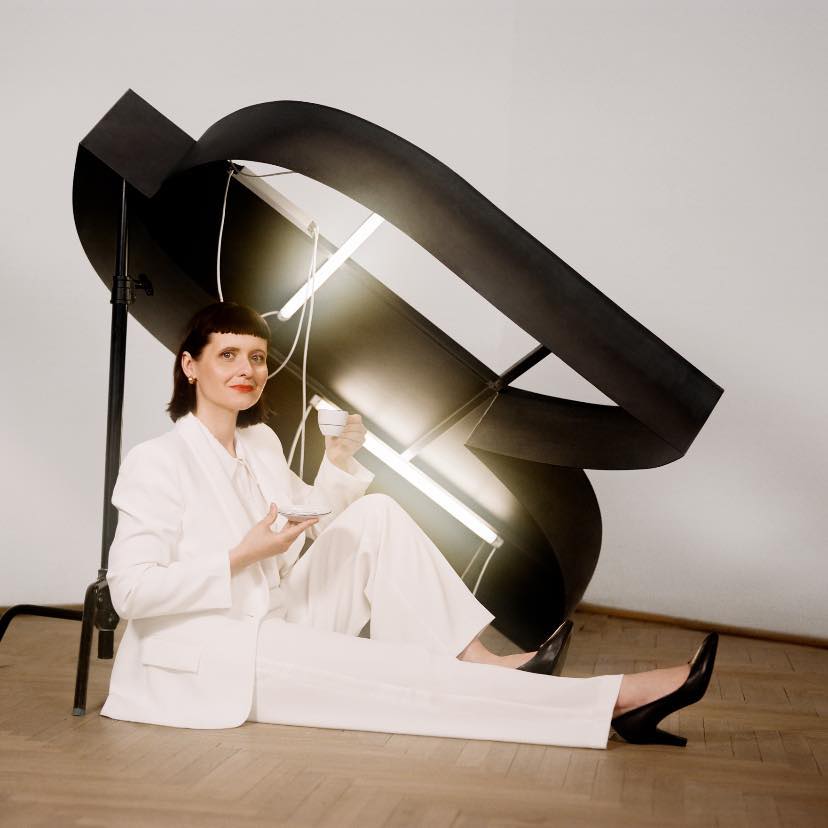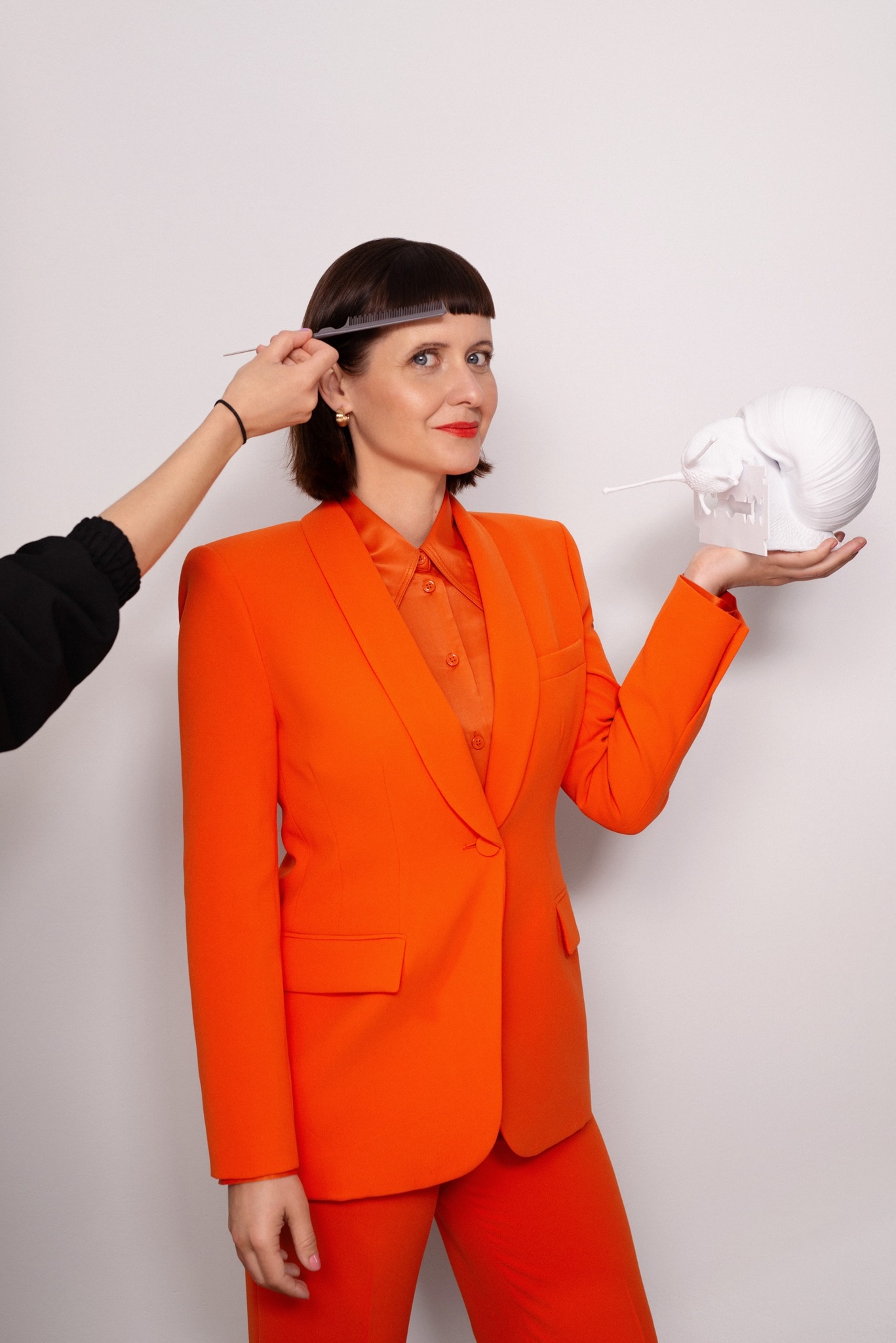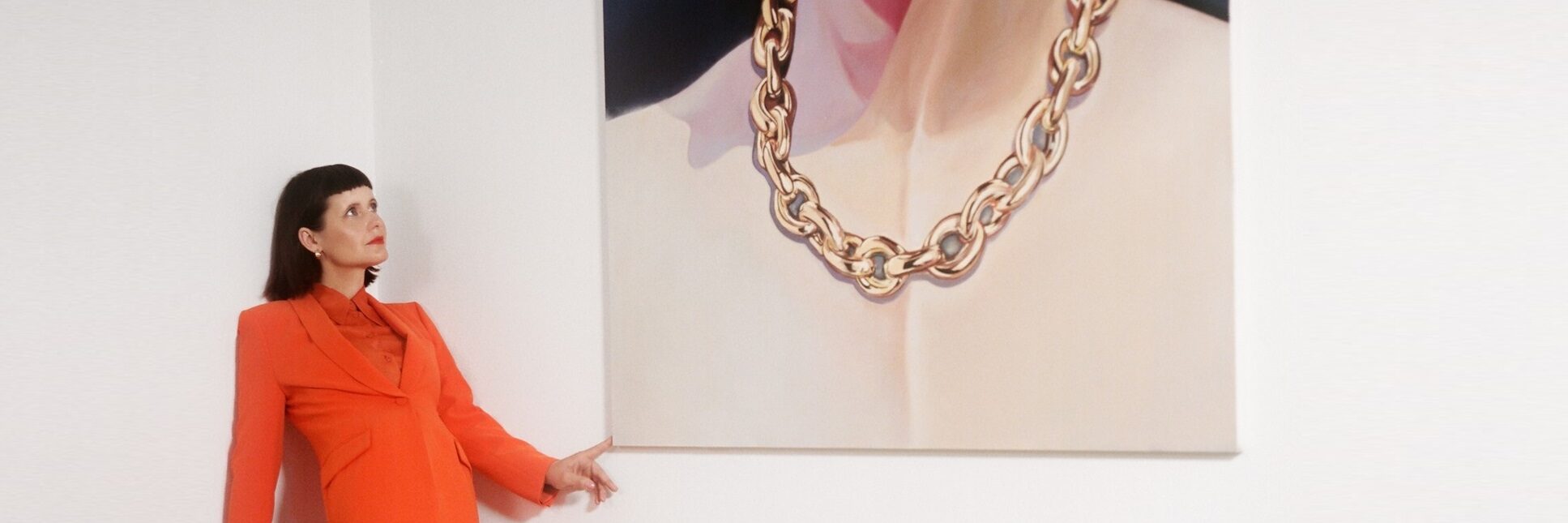The Track to The Gallery
Galeria Szara – a place far from modern sterile perfection, recently moved to Warsaw. Instead of the performative perfectionism, it focuses on a friendly atmosphere, networking people and loving care for the reception of art. We talk with Joanna Rzepka – gallery’s co-creator, artist and curator – about the art market in Poland, the space requirements for building good exhibitions and the relationship between architecture and art.

Photo: Tymon Nogalski
Mateusz Trzebiatowski: The move of Galeria Szara to Warsaw was inevitable. So far, you have appeared four times at the Warsaw Gallery Weekend (WGW) and you have probably been on your way to the center of the country anyway. What was the final motivator for moving the headquarters from Katowice to here?
Joanna Rzepka: Half joking, half seriously – in 2021 people started asking not ‘if’, but ‘when’. This made me understand that the threshold of expectation and patience had been exceeded. We have 20 years of experience in the art world. It is a vast period of time and the gallery world (including independent and private galleries) has changed tremendously. Places that are created on the basis of primary energy – that is, the rush of people, dreams, ambitions and ideas – usually cease to exist quickly, burn out or change. It is a matter of several years. Szara Gallery, as an independent space, has survived for over a dozen years and it was only 4 years ago, when we first went to the WGW, that we began to slowly transform towards commercialism.
What has changed your perspective over the course of 20 years?
First of all, the economy of living in the city has changed a lot. In the past, it was easy to obtain premises for an independent gallery on preferential terms or for free. This was the case when the Szara was established in Cieszyn. After moving to Katowice, we also got lower prices in relation to the market prices. A dozen or so years ago, artists also had different requirements, the costs of production and promotion as well as the involvement of friends. Students have always supported us with their time, and today many people who are in college also have a part time jobs. Currently, it is also more difficult to obtain external subsidies, and there has never been a steady grand programm for an art place that runs on a regular basis. We have tried to change that many times, also in cooperation with city offices or local governments, but the legal system makes it a lot more difficult. Then a pandemic happened in Katowice. Actually, overnight, it deleted one of the main earnings lines, i.e. the weekly workshops that we conducted. Subsidies also ceased to be allocated, the only source of income was to sell art. Fortunately, this coincided with a huge boom in the art market. I’m not complaining – I’ve always tried to summarize a given situation and think of how to do something different, better, in a way that we haven’t tried yet.
Is it safe to say that we have a real art market in Poland now?
Art has long been ranked among promising long-term investments. In Poland, however, there were people from the art world 3-4 years ago who spoke with absolute conviction that there was no art market in our country. And I agree it was indeed underdeveloped. In the pandemic years however, the awareness of buying and investing in art has changed. People stay in apartments more often and pay more attention to what they surround themselves with. Perhaps that is why many people have developed the need to experience art that brings ideas and values to their homes. Following that need, primarily I thought that Szara should have its own showroom in the capital – a space for our artists, people from Silesia. It ended with the entire gallery being moved to Warsaw. Having a location in this city increases market value and confidence.
What was important to you about the new venue for the new Szara Gallery?
Ultimately, we have the perfect space when it comes to our needs. It has an amazing atmosphere – it is located in an old tenement house with high ceilings. It has a favorable layout of the rooms, which is not obvious, so you can arrange it in an interesting way. The place is not new, but we grew out of the trend of independent galleries that were still operating in the 80s and 90s. We have never tried to make our space a perfect white cub. For us, the comfort of the artist’s work has always mattered more than care for the space. In Szara, we adapt, remake and rebuild. However, there are galleries where – for various reasons – you cannot hammer a nail, you have to be very careful with the floor, etc. It looks great on display, it is professional and well-kept. However, when it comes to the comfort of work of female and male artists, this is absolutely not the advantage. So if I were to choose works in a place that is more important than my art – I prefer to have an imperfect space. All in all, a balance in all of this is important.

Photo: Tymon Nogalski
The distance one has to pass to get to Szara seems calming. When we find ourselves at Bracka 23, we dial number 28 and go through the gate. We pass the square to find ourselves under the next entrance, and then follow the stairs to the second floor. We have time to cut ourselves off from the hustle and bustle of the city.
The location itself is friendly – it is in the very center of the city, in the vicinity of other interesting galleries with which we are friends. The very fact that we are on the second floor of a tenement house seems to me to be a typical circumstance in Warsaw. Even as a person coming here from the outskirts of Poland – Katowice or Cieszyn – I remembered such locations as something characteristic of the capital. To get to many galleries, you had to go through a kind of obstacle course. First find an address, a gate, an intercom, then another other one… It was never clear which floor to go to. Years later, we also followed this trend. This fits in with the slightly home-like atmosphere of Szara Gallery.
This way, we gain the time to get ready to enter the space of art.
Yes, actually, from crossing the gate, you go to the gallery, so maybe you are getting prepared for it a bit. It’s not like you’re stepping into a rush – not having a gallery space right on the street can work to the advantage of the art itself. Thanks to this, you do not connect art with the outside world that is buzzing in your head. For me, the huge mirror that opens the staircase leading to the Sara Gallery is symbolic. Here you can review, improve and finally prepare to enter the space of art. Many people who have known us for years also appreciate the fact that we have a tenement house renovated in gray, which corresponds to the name of the gallery. All doors are gray. It was not our effort, but luckily it happened and it works.
My guess is that the exhibitions are always a result of a long process. What role does space play in installing a show?
The space in which the works are displayed has a great influence on the final shape of the exhibition. The artists we work with are very aware of this. They always relate to what is in space. In fact, every contact, wall break or the location of the window affects the reception of works by people visiting us. Each of our exhibitions is prepared especially for the Gallery, the works are created for a specific event. From the very beginning, they are planned in relation to the space and with keeping in mind how they can be displayed. When they come to the gallery, I try to set aside enough time to think about the concept. First, we unpack and unfold the works and review them. We take pictures of them and it is almost always the case that you look at the photographs later at night and think about the layout. In the morning you see everything with a fresh perspective and the work display, layout is almost figured out. Then there is the test phase – it either clicks or not. If not then the walking and positioning begins all over again. Then it’s good to have time to leave everything overnight and come back again in the morning
Does it happen that you have to give up some of the works during the show installation?
It happens that sometimes even a very good piece that should be on the exhibition ultimately is left out because it does not harmonize well with the space. It is always a very difficult decision, but it is better for the sake and the reception of the whole presentation. Often, the less work, the better – thanks to the reduction they gain a much needed amount of symbolic oxygen. We want our visitors to feel comfortable, not over jammed with information.
Sometimes discomfort is the desired effect the work is supposed to have on us.
You can place a work of art in space in such a way that it evokes a feeling of danger or discomfort. I will never forget when I was once at the Venice Biennale in a gigantic post-factory hall. There was a huge dry tree suspended by its roots upside down, which moved like a pendulum. The movement was quiet, but the rustle of a swaying several-meter-high tree, the sound and vibration of the air – it was all a mixture that had a very physical effect on me.
On the day we talk, Rafał Wilk’s exhibition “There is one more island under this island” is shown in Szara Gallery. With the leading work of art at the show, one can see here – similarly to the installation with a tree, which you mentioned – that people subordinate nature to themselves…
The large-format image you recall presents wild copra – it is a thicket of plants that surrounds office buildings, illuminated by aggressive light from below. The title ‘There is another island under this island’ points to the fact that the work is not only a presentation of plants, but also an opportunity to wonder why we actually surround ourselves with them, since we do it in such a very random way. A tuft of grass will not make us want to sit in its surroundings – and probably on a cool concrete bench next to it. To want to spend time among nature, there should be a lot more of it. This is a topic that has been raised for a long time – the vegetation has been cut out of our urban surroundings too much. And yet it regulates the temperature in cities, we are cooked without the trees on the streets. There are squares that were once beautifully greened and then completely concreted. In his works, Rafał Wilk raises questions about how and whether we should surround ourselves with plants and whether they are satisfied with it. From the overtones of the exhibition, unfortunately the answer is: not necessarily…
Exhibitions at the Warsaw’s location of Szara Gallery also enter into a dialogue with architecture from a different angle. For the opening of the gallery in a new space, you brought a little bit of Silesia to the capital. ‘Peripheral vision’ by Maciej Cholewa showed small towns, the creativity of people and their home space. What does this artist’s art tell us about the idea of periphery?
Maciej is an admirer and eulogist of small towns. His work shows the image of Poland as one great province, because in fact we have just over 30 cities in our country with over 100,000 inhabitants. people, and the rest is a periphery. The artist walks and explores small towns with interest, takes photographs, which we can also see on his Instagram profile called ‘Greetings from a small town’. What is very important, he himself comes from a small town where he spent all his life. He is not an outsider who comes, judges and tries to form an opinion about a given phenomenon. He describes it from the inside out.
So what is characteristic about Radzionków, where Maciej grew up?
Most of us are actually from similar small towns so probably many people know the places that Maciej is pointing towards. Radzionków is the most important in his work and has many points of contact with other small towns – not only those that are based in Silesia. Living in small towns or visiting them regularly, we can take many elements for granted. When an artist shows us an object or a photo, we might think, ‘I recognize it! I passed it daily without paying attention to it’. Under “this” there are, for example, beautiful gates that can be found all over Poland and are often made by home-grown craftsmen. They are a gateway between public and private space, often also with interestingly designed pictograms that say something about the people who made them. At the seaside, we can find maritime motifs – waves, anchors or fish, in Silesia decorations related to coal mining. Maciej began to draw from this tradition and create gates inspired by various stories. A whole series was created, including ‘Getaway for those who cry at sunset’ or ‘Getaway for those who left small towns to go to Warsaw’.
Maciej’s gates seem to be objects with a hint of social involvement. It is also visible in the very functioning of the Gray. How to combine them with commercial activities?
I think social activity and community building are part of our identity and we just can’t do otherwise. Even if we are in Warsaw now and we have to keep our feet on the ground, because we are a commercial gallery that has to support itself and help our artists earn money, I do not know what would have to happen for us to lose our sensitivity to important topics though. We are now preparing for the opening of the exhibition by Bogna Burska – ‘Watercolors’ – an artist with a vivid feminist message and research on vulnerability. We are also preparing for the new edition of the Warsaw Gallery Weekend, where we will show the duo of Irmina Rusicka and Kasper Lecnim, who are interested in life-giving progress and its victims. Their sculptures are covered with bone black, i.e. the pigment obtained from burnt animal bones, which in the old days were drawn in caves, and today is the raw material of, among others, for the production of heat shields for satellites. These are strong works that interpret reality in a very critical way. Our social activity is also visible in the fact that we love to connect people, always investigating non-obvious correlations. We like to wonder what more can be done, differently, better. It is our condition we are not looking forward to being cured from.

Photo: Tymon Nogalski




